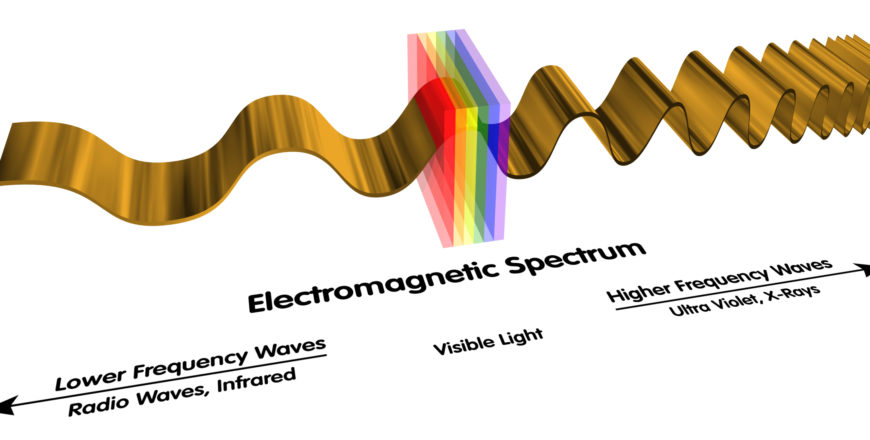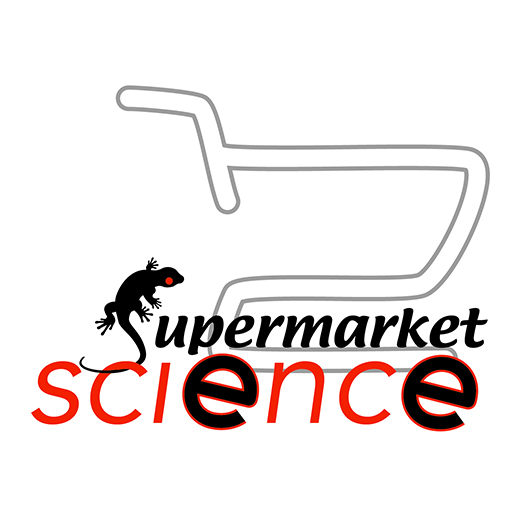Electromagnetic Spectrum

Supermarket Science Materials are organized into thematically linked sets with experiments and activities as well as background information that makes them easier to do. There are also a bunch of simple, fun art and writing projects. All of the activities can be done alone or in conjunction with other project sets. Choose activities that are developmentally appropriate for your children.
All Supermarket Science Materials are primarily geared toward students in elementary and secondary schools, as well as their parents and teachers, but can be expanded to higher grades. The activities are designed to advance the understanding of concepts of biology, ecology, geology, and sociology based on local resources like a backyard or a local grocery store. All of the materials in this set and others link the Core Curriculum Standards. Use these Standards to focus the activities to a particular grade level.
There are also LEARN, SHOW, USE, DO, and TEACH pages. LEARN pages are designed to be printed out and given to the kids. They contain explanations, stories, or diagrams. SHOW pages usually present interesting photographs or illustrations that demonstrate specific concepts. USE pages are created as supplemental materials for the activities and experiments. Animal Cards and Map Cards are examples of USE pages. And finally, the DO pages contain the actual activities and experiments—please print as many copies as you need and give them to your children. Please use the back of these pages as scrap and add additional pages as needed.
On some pages, there are icons of animals. For example, an activity about elephants might have an elephant icon next to it. These icons can be used as keys to link information between all of the Supermarket Science Materials.
Most DO pages have a What You Need list of items in the margin under the title of the activity. This is a quick reminder for what children should have while doing the activity. It might look something like a list on the right: Animal Stamps pages, Animal Cards pages, research books, pencil, scissors, glue, etc.
Some of the activities use of cards from the Supermarket Science Cards or Stamps USE pages. Creating taxonomies is part of the scientific process. Card games and activities allow kids an opportunity to practice this skill.
Electromagnetic spectrum might be a difficult subject to master for an elementary school kid, but thinking about colors is not. We believe that even young kids are able to understand a lot of the material covered in these pages. If you are part of a school, then science buddies teams can work together—older kids can learn the material and show off what they know to their younger science buddies. At home, older siblings can do the same for their younger brothers and sisters or even their parents and grandparents. Explaining the material to others is a great way to master difficult consents. So plunge in and have fun. This set of activities shows just some possibilities of learning about electromagnetic spectrum. There are as many ways of learning as there are people doing it. We encourage you to come up with other ways of explaining colors and light. Think of these activities as inspirational examples, jumping off points.
The Electromagnetic Spectrum is a term scientists use when they want to talk about radiating energy—radiation. All radiation is carried by photons, which are massless particles that travel at the speed of light. These photons can have greater or lesser amounts of energy.
White light is made out of all the colors of the rainbow. When white light passes through a prism, we can see it spread out on the other side into its different colored components. Red, green, and blue are colors of light that aren’t a mixture of any of the others. We call them primary colors. Colors like yellow (a mixture of red and green light) are known as secondary colors.
An object is a particular color because of the color of the light it reflects.
Did you know astronomers use infrared light to see through nebulas to reveal more?
Stars like our Sun end their lives by casting off their outer layers, briefly forming a spectacular "planetary nebula" like the Helix Nebula. In visible light, we see the glow of hot gases illuminated by a hot, compact core, known as a "white dwarf." Shifting into the near-infrared reveals the glow of more complex molecules formed in the outer shell. The mid-infrared glow highlights the warm (bright red) dust surrounding the white dwarf.
CREDIT: Optical: NASA, NOAO, ESA, the Hubble Helix Nebula Team, M. Meixner (STScI), and T.A. Rector (NRAO); Near-infrared: ESO/VISTA/J. Emerson. Acknowledgment: Cambridge Astronomical Survey Unit; Mid-far-infrared: NASA/JPL-Caltech/K. Su (Univ. of Arizona); Ultraviolet: NASANASA/JPL-Caltech
